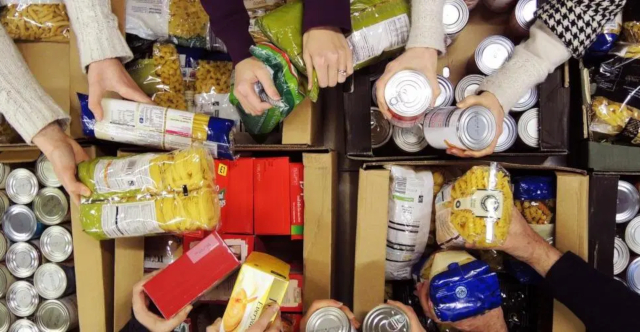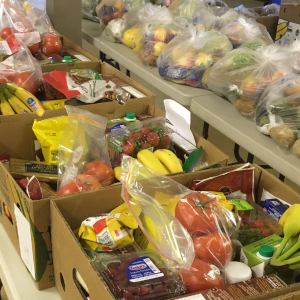The latest numbers may be hard for some of us to believe. But Food Bank demand in Canada (and presumably, in other Western countries) continues to rise at astronomical rates. And the folks who run the food relief effort say the situation is ‘unsustainable’…
 Packing food hampers at a Food Bank: Demand has hit record levels and is still rising…
Packing food hampers at a Food Bank: Demand has hit record levels and is still rising…
Keeps getting worse
The 2023 Hunger Count Report by Food Banks Canada (FBC) reveals that record numbers of Canadians are still turning to food banks. This in spite of much-publicised promises by the mega supermarket chains to control or lower prices.
“In March 2023, there were almost 2 million visits to food banks across Canada,” the Report screams. That represents, “a 32 percent increase compared to March 2022, and a 78.5 percent increase compared to March 2019, which is the highest year-over-year increase in usage ever reported.”
FBC is an umbrella body representing Canada’s 4,750 Food Banks and other community hunger relief organizations that, “work[s] tirelessly to advocate for meaningful actions that counter hunger and its root causes. We want to eliminate the need for food banks one day, once and for all.”
Who are the hungry?
The Report paints a grim picture of who Canada’s hungry are:
One third of food bank clients are children.
17.3 percent of Food Bank clients are single adults with children.
8 percent are seniors – up from 6.8 percent in 2019.
10 percent receive pensions.
1 in 6 Food Bank clients is fully employed.
42.4 percent of Canadian Food Banks users are social assistance or disability supports recipients.
26.6 percent of food bank clients are newcomers to Canada who have been in the country for 10 years or less.
12 percent of Food Bank clients are indigenous people, even though they represent only 5 percent of the general population.
Wage-price gap
One of the most troubling indications in the Hunger Count Report is that more fully-employed people are seeking Food Bank help. That’s another way of saying wages are not keeping up with prices.
That also means that lower-income Canadians are having increasing trouble meeting their other essential costs of living: Rent/mortgages, energy, transportation, utilities and taxes.
The overarching message is, more and more Canadians are being pushed down below the poverty line. It’s no mere coincidence that the Hunger Count Report features a Povery Vulnerability Map.
FBC speaks out
“It’s one thing to look at a report filled with these big numbers,” Food Banks Canada’s CEO Kirstin Beardsley told CTV News. “Behind every single one of these numbers is a person, and I know what it takes for someone to get to the point where they’re turning to a food bank for help, and so you replicate that two million times in a single month and it’s heartbreaking.”
Beardsley says governments must make, “long term social policy investments,” not just in the foodsphere, but in affordable housing and boosting supports for fixed income families. “These are investments in our ability to thrive as a nation.”
“We’re not talking about a small investment in the future of this country,” Beardsley stressed. “What really drives political courage, to be honest, is everyday folks like you and I getting mad enough to make this a ballot issue, to make this an issue at the election, to not let our elected officials at every level of government off the hook anymore.”
My take
Bravo, Beardsley!
I’ve long believed that the only statistics the politicians give a rat’s p’toot about are the ones generated by the ballot boxes. The collective will of the people – as expressed by their votes at election time – is the only number that will speak louder to politicians than the coercive innuendo of big business.
And we need organizations like Food Banks Canada to keep reminding the politicians that poor folks vote, too.
~ Maggie J.

